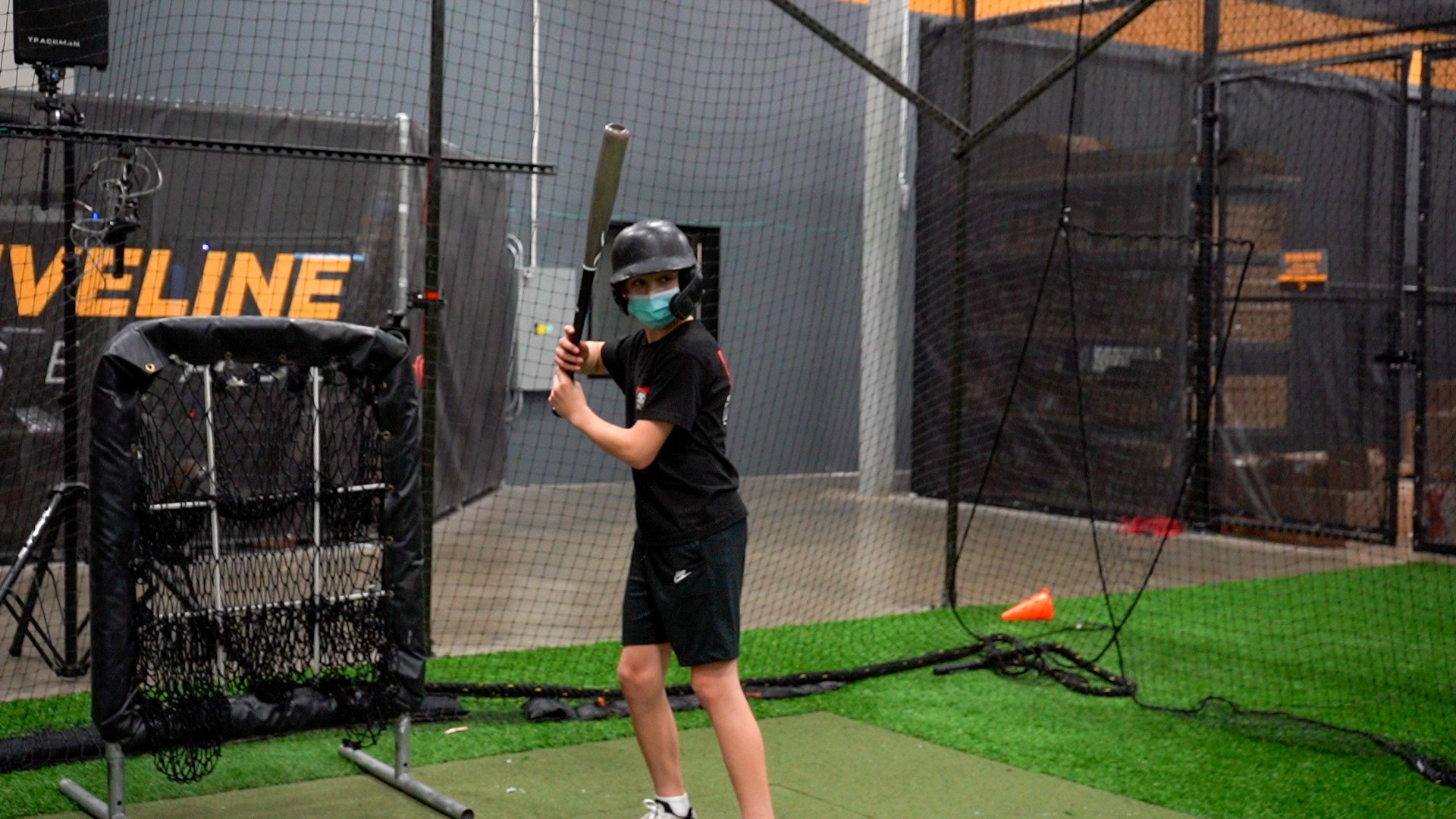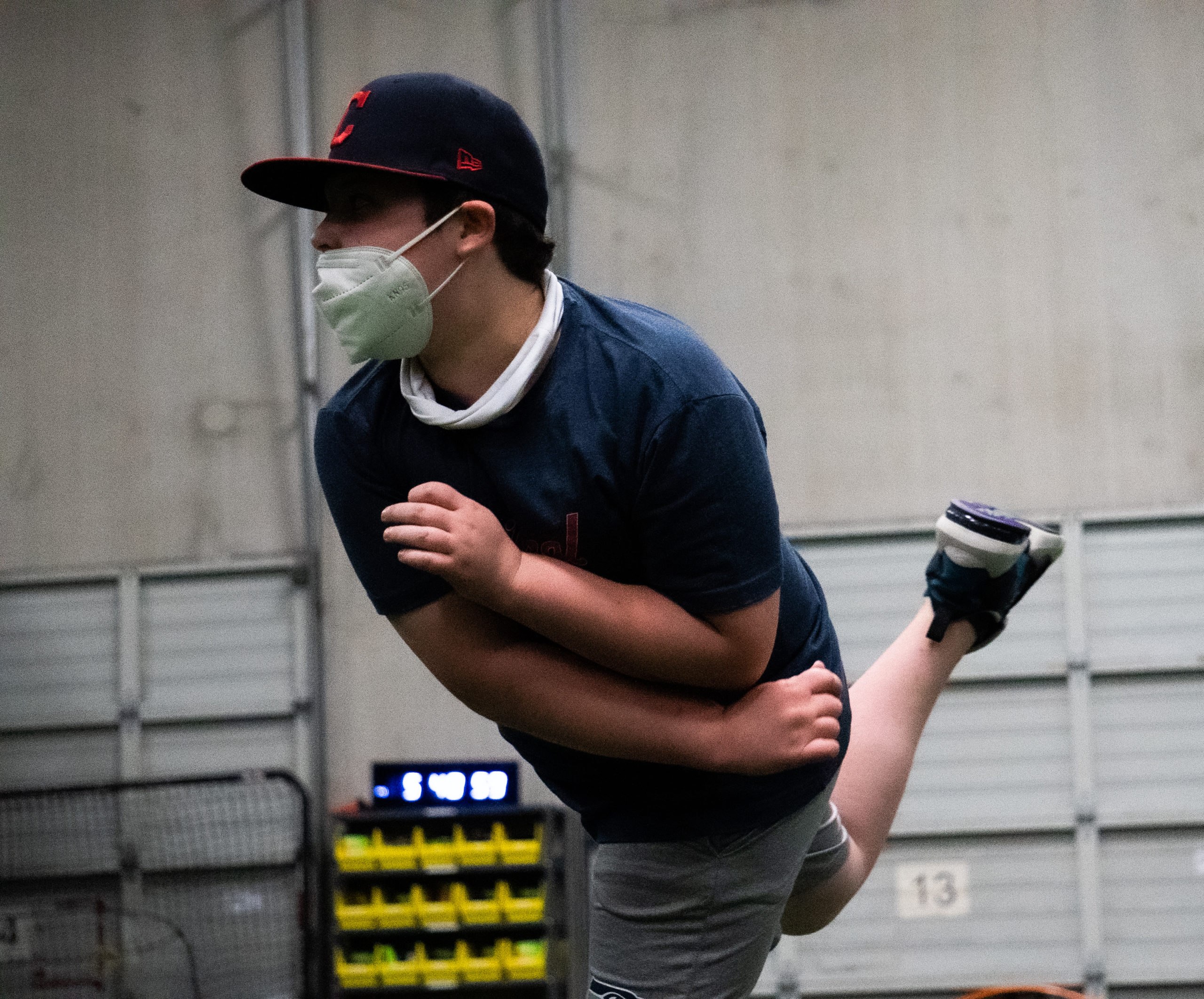Fun Baseball Drills for the Skills that Scale in Youth Baseball

When you think of baseball drills, you often think of something repetitive and focused on perfecting mechanics—something you need to do over and over again until you get right. But baseball is much more dynamic than just repeating the same thing over and over. This is why you need fun baseball drills for practice.
Not all drills need to look like this. Reconsidering what a drill can be and understanding how engaging competition and games can be for youth players can open up a wide range of options to make practice fun and productive.
We want to make practice and skill development more engaging by introducing rules, point systems, and competition around the Skills that Scale. We want to make sure we’re training skills that will be impactful today and in the future.
These Skills that Scale are:
- Throwing Velocity
- Hitting a Target
- Bat Speed
- Exit Velocity
We’re going to take the Skills that Scale and create games with scoring systems to introduce competition amongst our players—not only with teammates but also with themselves over time. The fundamentals of making these games are how we run our Youth Travel Teams. Interested in learning more? Check out our Youth Baseball Development Certification.
This allows us to engage hitters and pitchers better and cut down on time in practice where youth athletes go through the motions. Check out our favorite fun baseball drills, in the form of games, below. The games we’ll talk about here are Levels, Kill the King, and Medicine Ball Volleyball.
Fun Youth Baseball Pitching Drill
Levels
Hit a target while scaling difficulty to the ability of the player
Skill Focus: Hitting a target
Materials / Equipment:
Baseballs to throw with
A space with sufficient distance to throw
A target (if a catcher is not available)
Playing Level: 12U – You may be able to use this game with an older player who has less playing experience.
Time Commitment: 15+ minutes and will vary by age
Game Goals: Highest point total wins
Game Description:
For every pitch that is thrown competitively in the strike zone, the player will get a point each time they hit a target. The target may be a strike zone, an area in a strike zone, or a cacher. Since we always want to keep pitch counts and throw counts in mind, we recommend the following sequence for throws:
Level 1: 30 feet (32 feet Pony) – 6-8 throws
Level 2: 38 feet (41 feet Pony) – 6-8 throws
Level 3: 46 feet (50 feet Pony) – 6-8 throws
For each level, you will want to record their success rate. This is a great way to work on players’ accuracy and help them build confidence at different distances. For a player who is at an age where the mound is being pushed back, this is a great way to transition them to the farther distance.
Version 2: You can add a competition aspect by lining up two players at identical distances next to each other. One player will be lined up two or three feet to the left of home plate, and the other will be lined up two or three feet to the right.
Both players can start at the same time, and they are aiming at the same target, but take turns rotating throws. Whoever hits the target the most times wins. As a tiebreaker, you can time them or say the winning is the player who finished each throw first. This is a good opportunity to be competitive in fun baseball drills.
Fun Youth Hitting Drill
Kill the King
Engaging a player’s awareness of the count they are hitting in and their approach to those counts.
Skill Focus: Barrel Control + Bat Speed
Materials / Equipment: Baseball Bat + Baseballs
Playing Level: 8 years and up
Time Commitment: 10+ minutes
Game Scoring: Highest point total wins
Game Description:
This game trains approach by giving hitters specific counts they need to hit in, along with quality contact by assigning points for specific hits. As hitters go through rounds, coaches will assign points to hard hit balls. Below is an example scoring system.
Note: Subtracting points does add another level of competition to the game, but we would only suggest doing so if you have someone dedicated to tracking points. Depending on their age and maturity, athletes may also be given this role.
Round 1: Player starts with a 2-2 count
Hard Hit Balls: 2pts
Anything Else: 0pts
Coaches will then need to split the team into smaller groups and set a point total that the winning team needs to reach. We would suggest 20 points. Players on each team should switch off hitting, so Team 1 Player 1 hits, then Team 2 Player 1, then Team 1 Player 2, etc. Adding in a count also restricts the number of chances a player gets, so you aren’t throwing a set number of pitches per round. Each player steps in and should get points in 1-2 swings (2 swings if they take a ball).
Once players each hit one time, that finishes ‘Round 1’. In the second round, we would add in negative points.
Such as:
Round 2: Player starts with a 2-1 count
Hard Hit Balls To The Outfield: 3pts
Ground Balls: Minus 1pt
In the third and final round of Kill The King, we really emphasize a more game-like environment.
Round 3: Player starts with a 3-2 count
Hard Hit Ball: 4 pts
Soft Contact or Pop-Ups: Minus 2 pts
This is one of our favorite fun baseball drills for hitting because it combines all the skills a good hitter needs.
Check out our favorite ways in how we warm-up our hitters for games like these.

Youth Practice Games: Skills that Scale
47 games utilizing skills we’ve identified to help youth baseball players improve.
Fun Youth Baseball Drill for Strength and Power
Medicine Ball Volleyball
This will get your players’ competitive juices flowing while working on rotational power.
Skill Focus: Explosive strength, getting our athletes to move as fast as possible with a heavier object
Materials / Equipment: 2-3 medicine balls, depending on how many groups you can form your team into. For ages, middle school and up, these balls are usually 6 lbs or more. At younger ages, you can use a basketball or soccer ball instead of a medicine ball. A hurdle or barrier players can see through, such as a fence, for the medicine balls to be thrown over.
Playing Level: 9U +, age & strength of athletes should determine medicine ball weight
Time Commitment: 5+ minutes
Game Goals:
The first team to ten points wins, point totals can be adjusted down if you are short for time. One team gets a point when the medicine ball is dropped on the other side or does not make it over the fence/barrier.
Players develop explosiveness by throwing the medicine ball up in the air and the ability to accept force by catching the medicine ball.
Game Description:
Use a moderately heavy medicine ball for the age group that is playing. We would suggest using a hurdle set at max height (around 5 feet) for a “net”. Other objects can be used, such as a fence or a string, but we suggest that players be able to see through the object to the other team.
Players should be broken up into groups of 3-4 and positioned on either side of the net. One player starts with the medicine ball and throws it over the hurdle to the other team. A player on the other team must make the catch and return the medicine ball to the other side. If one team drops the medicine ball, then the other team gets a point.
Version 2: You can play for time, seeing how many completed throws each team can make in one minute.
Version 3: You can play for a number of tosses. See how fast each team can complete the set number of throws.
Check out the other ways we incorporate medicine ball training for our youth athletes.
By Michael O’Connell, Director of Education
Comment section